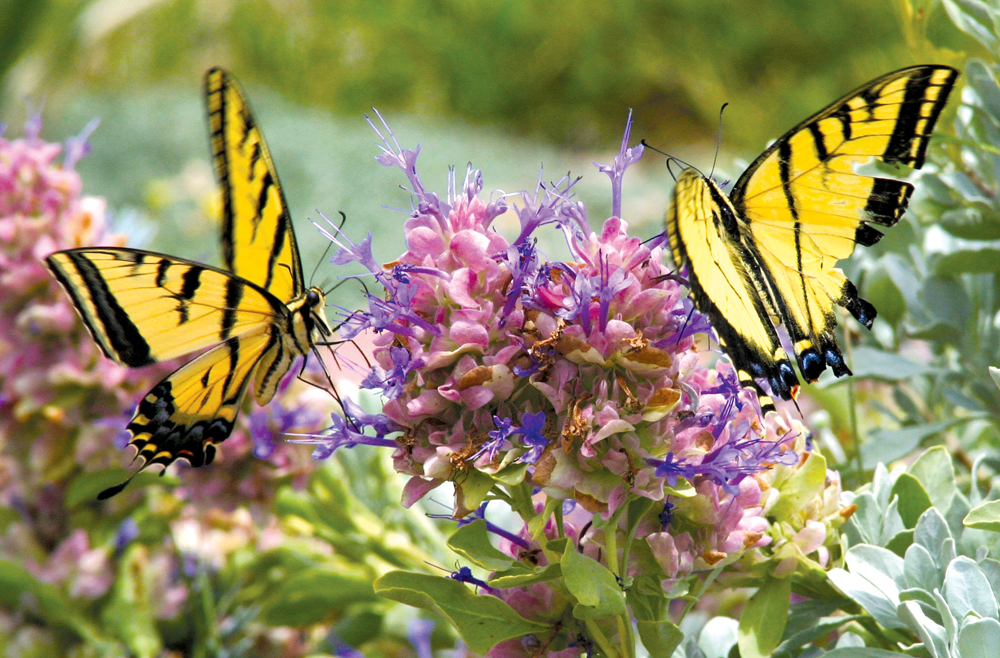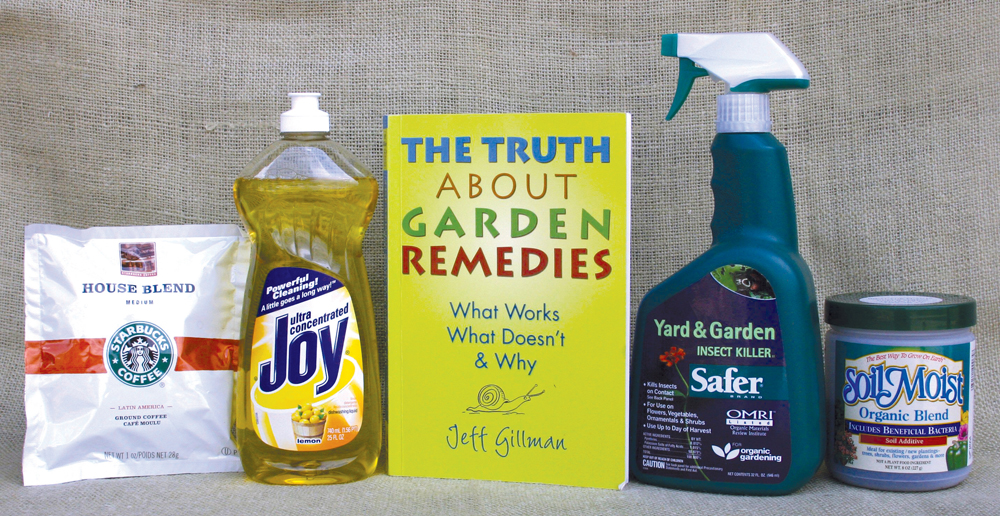The most important secret to repel bugs and insects from the garden is to grow the healthiest plants possible. Most pests tend to attack plants that are stressed in some way, so by keeping your garden stress free, you may avoid the pest issue altogether. Proper soil preparation, good watering techniques, and spring cleaning are basic practices to utilize. Here are additional tricks to keep in mind:

• When planting new plants in an established garden, incorporate a hydrogel or similar soil additive product into the planting area to help keep moisture more available to the new plants. I have lost several newly planted conifers because I forgot to water them often enough. The smaller the plant, the more critical this step is.
• Coffee grounds add organic matter to the soil, help lower pH levels, and have minor nutritional value. Try some of these methods: 1. Dilute grounds with water for a gentle, fast-acting liquid fertilizer. Use about a half-pound can of wet grounds in a five-gallon bucket of water; let it sit outdoors to achieve ambient temperature and then apply. 2. Sprinkle coffee grounds around the base of acid-loving plants, especially dwarf conifers, azaleas, and the like. Scratch the grounds in with a three-tined garden tool and water deeply. You can pick up free bags of coffee grounds at most local coffee shops.
Dealing with pests
Even if you’ve got wonderfully healthy plants, pests may occasionally invade. There are potentially hundreds of garden pests that you may have to deal with, but here are a few we often encounter in our garden railroads. (Be sure you’ve correctly identified the pest itself before proceeding—there are few things more frustrating to a gardener than to spend time eradicating pests, only to find out you were using the wrong product!)
Slugs. The two most common homemade cures for slugs I’ve heard about are beer baits and eggshell barriers. Here’s the real scoop on both.
Beer baits are simply containers filled with beer and set out in the garden. The theory is that the slug climbs in the container and drowns in the beer.
Unfortunately, only certain types of slugs are attracted to beer. You also have to be careful to use a type of container that the slug can actually climb into. It also needs to be deep enough for the slug to drown in. Jeff Gillman, author of The Truth About Garden Remedies, suggests setting a 6-7″-tall can into the soil so that the top of the can is level with the ground surface. Fill the can with 5-6″ of beer, allowing 1″ of clearance at the top. Check each morning for results.

Eggshell barriers consist of a ring of finely crushed eggshells spread around the base of plants that are most often attacked by slugs. According to Gillman, it takes a lot of eggshells, crushed to just the right size to slow the slugs down, but they still manage to climb the barrier. Instead, try diatomaceous earth, a natural, organic, pest-control solution found at garden centers or online specialists. Diatomaceous earth is an abrasive powder made from mineral remains of single cell aquatic plants. It kills by abrading and dehydrating crawling insects like slugs, ants, cockroaches, earwigs, grasshoppers, and fleas.
Caterpillars are juvenile forms of moths and butterflies, including swallowtails and hummingbird moths, so if you can live with the damage they incur, you’ll be rewarded with a variety of pollinators later in the season. If the damage is extreme and you need to control the caterpillars, the safest product to use is called Bt (Bacillus thuringiensis), a bacteria that infects the gut of soft bodied caterpillars.
Ants. I get a lot of ants in my garden and, though they do some minor damage, the greater problem shows up in the morning after our resident skunk has gone ant-hunting through the garden during the night. Rather than take on the skunk directly, we’ve decided to go after the ants instead. The simplest solution we’ve found is to mix about one teaspoon of lemon Joy dishwashing liquid with 16 ounces of water in a spray bottle. Spraying the ants directly is quite effective. This is also a great all-purpose bug spray, but it can be toxic to some plants. (It may be safer to use an approved insecticidal soap if you’re spraying insects on plant foliage.)
Aphids, mealy bugs, and other soft-bodied insects. This is probably the easiest group of garden pests to control and are usually most safely controlled with horticulturally approved insecticidal soaps. These sprays have been tested on many garden plants (read the label first to make sure) and are effective only when sprayed directly onto the pests themselves.
Spider mites. The first thing I do when I begin to see spider-mite damage is to spray the plant with strong streams of water, effectively knocking them off the plants onto the ground. Then I clean up the debris underneath to remove their hiding places. They’re usually worse during the hottest part of summer. If the problem persists, use an insecticidal soap that lists spider mites on the label.













